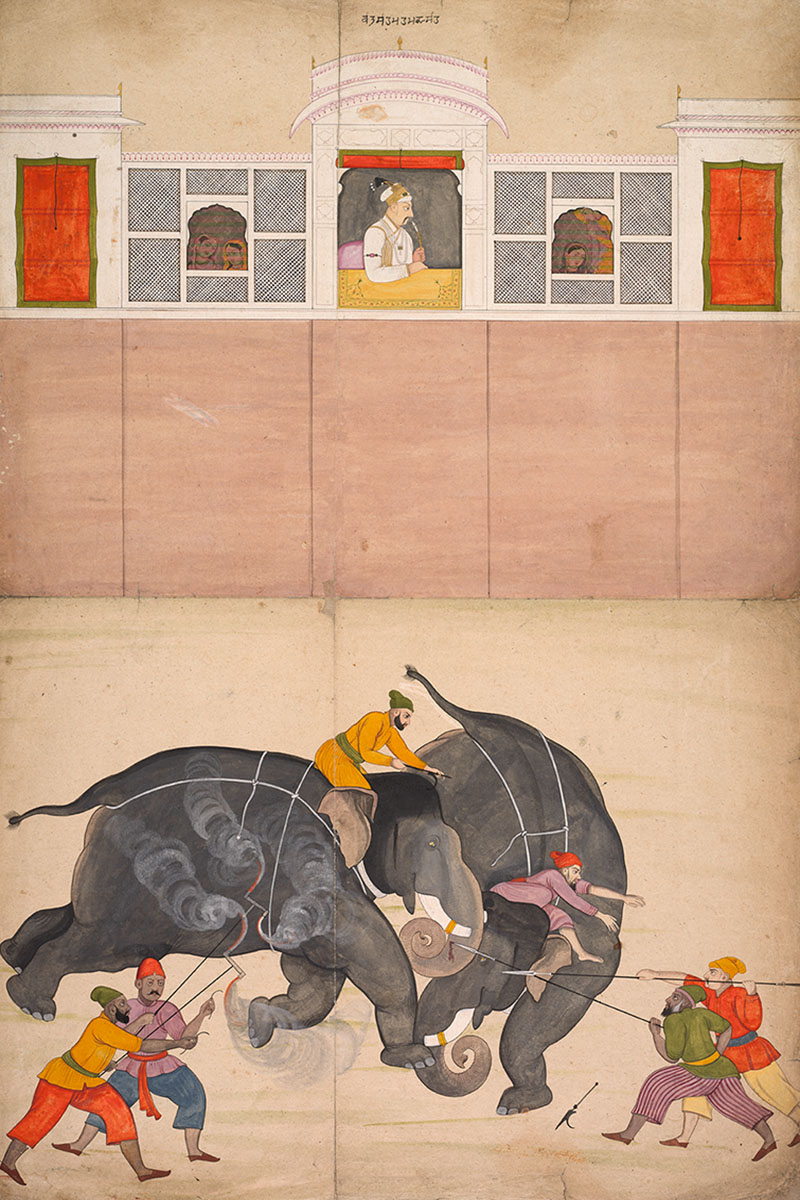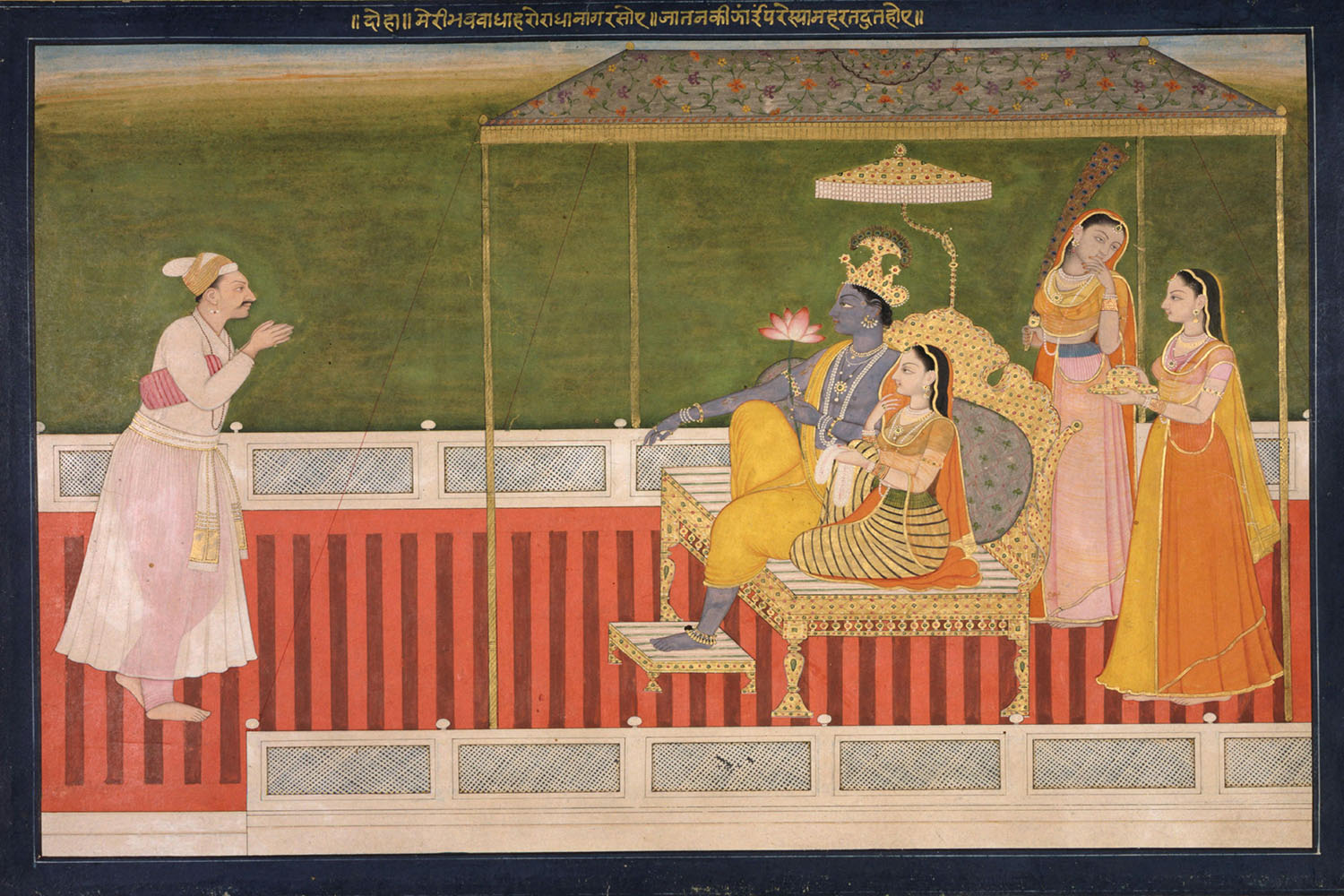ARTICLE
Nainsukh
Unlike his brother and father, Nainsukh is known mainly for painting from life rather than depicting religious or folk stories, although he has produced several notable images of these as well. Apart from the style described above, he was also known for his humorous observation of his subject matter, something which is particularly pronounced in his paintings of Balwant Singh and the Jasrota court. Scholars note this series of portraits for their frank depiction of ordinary scenes from the prince’s everyday life — trimming his beard, writing letters, preparing for bed and so forth — which are nonetheless rendered with great care by Nainsukh. This period at Jasrota is often cited as an example of the close ties that sometimes arose between patrons and artists in mediaeval India, going well beyond financial obligation, and departing from the convention of portraying rulers in a formal and flattering light. The scenes painted by Nainsukh grant great insight into the prince’s state of mind, suggesting that Balwant Singh had formed a friendship with the painter. Nainsukh is also known to have visited Haridwar in 1763, when the prince’s ashes were taken for dispersal in the Ganga. While there, he also added a long entry on the prince in the priest’s registry, along with a drawing.
Nainsukh’s style had a major impact on manuscript painting at Basohli and subsequently at Kangra, where his sons Kama, Ranjha, Nikka and Gandhu later worked. He had presumably trained them in his methods, which fit neatly with the existing Mughal influence that had been growing in the region since the early eighteenth century. His work is housed at the Metropolitan Museum of Art, the Victoria and Albert Museum and the British Museum, among others. Nainsukh’s work continues to be widely regarded as uniquely representative of the fully realised Pahari style, and has been the subject of multiple publications, most notably BN Goswamy’s Nainsukh of Guler, published in 1997.
Bibliography
Our website is currently undergoing maintenance and re-design, due to which we have had to take down some of our bibliographies. While these will be re-published shortly, you can request references for specific articles by writing to hellomapacademy@map-india.org.








